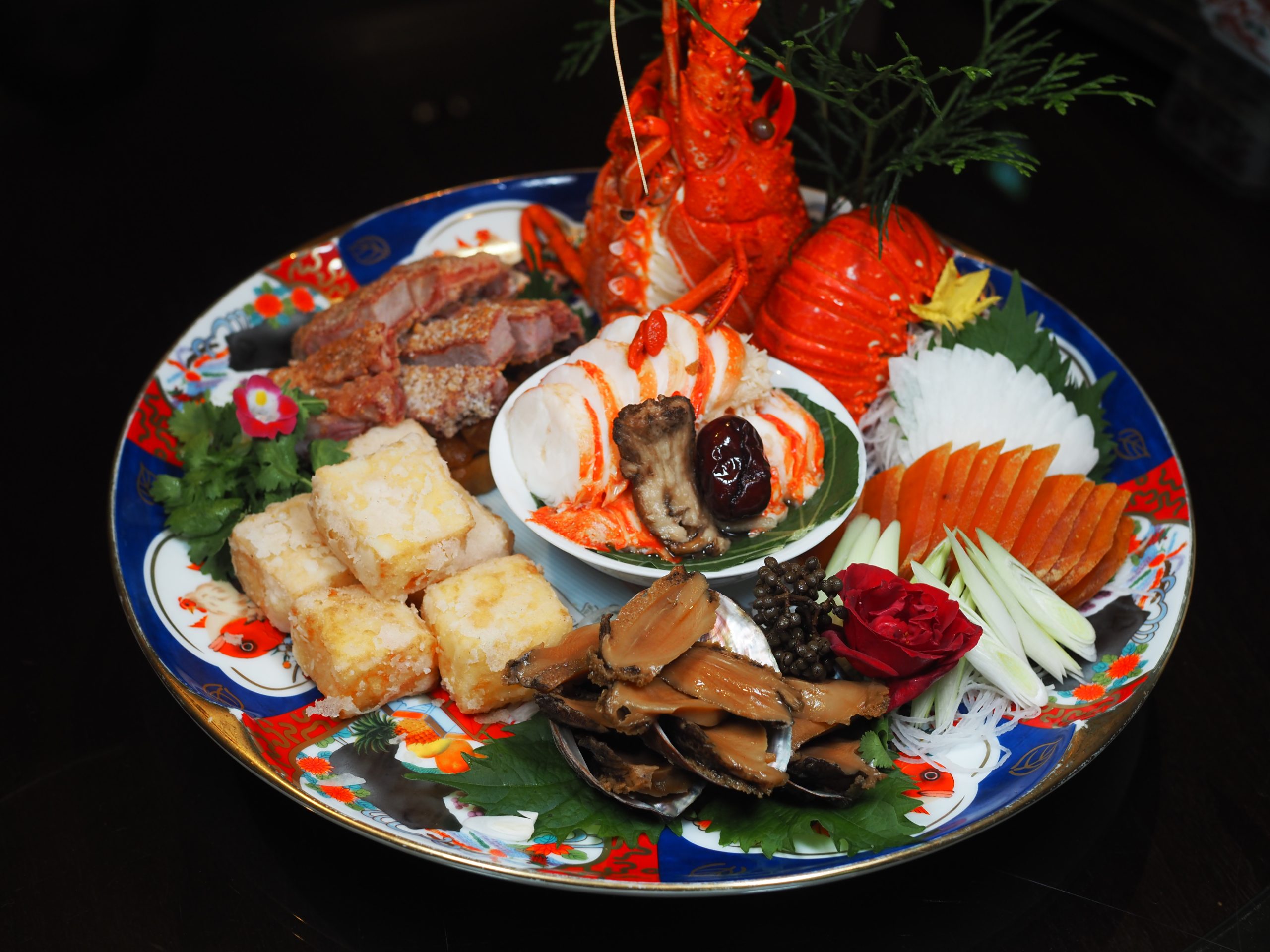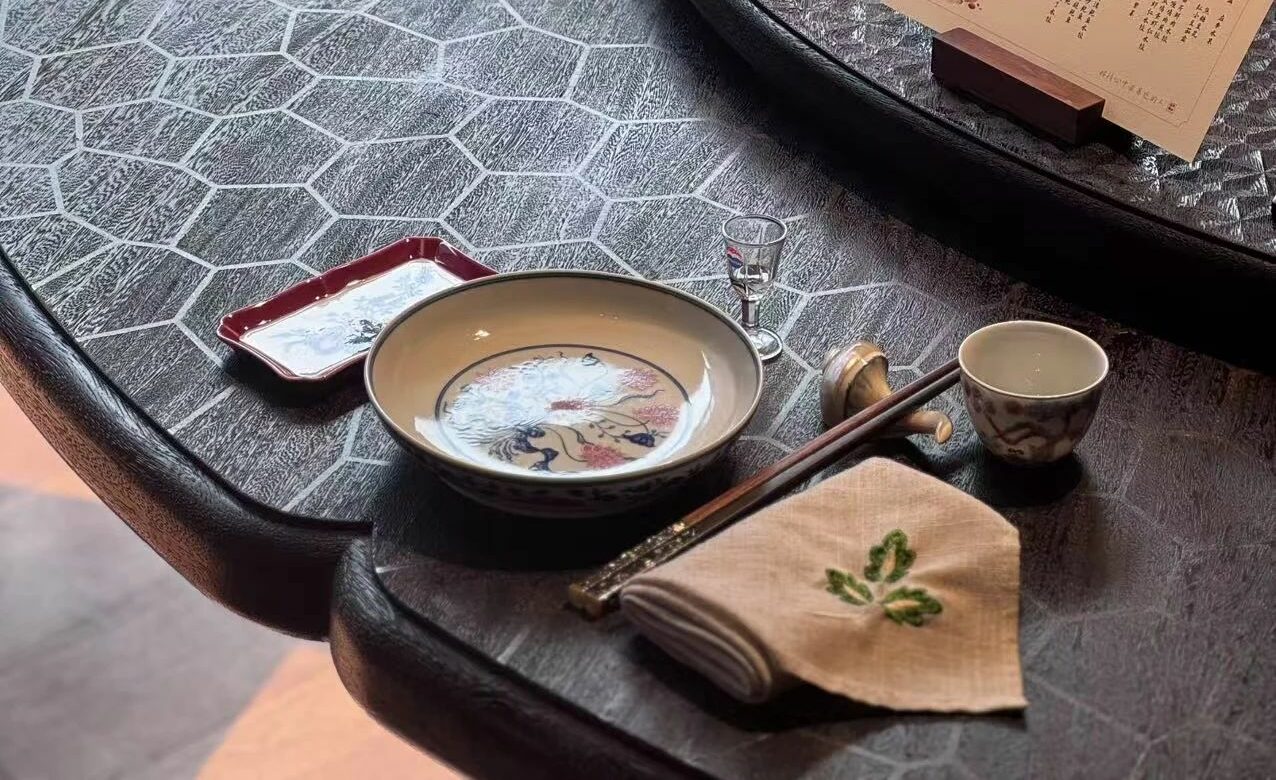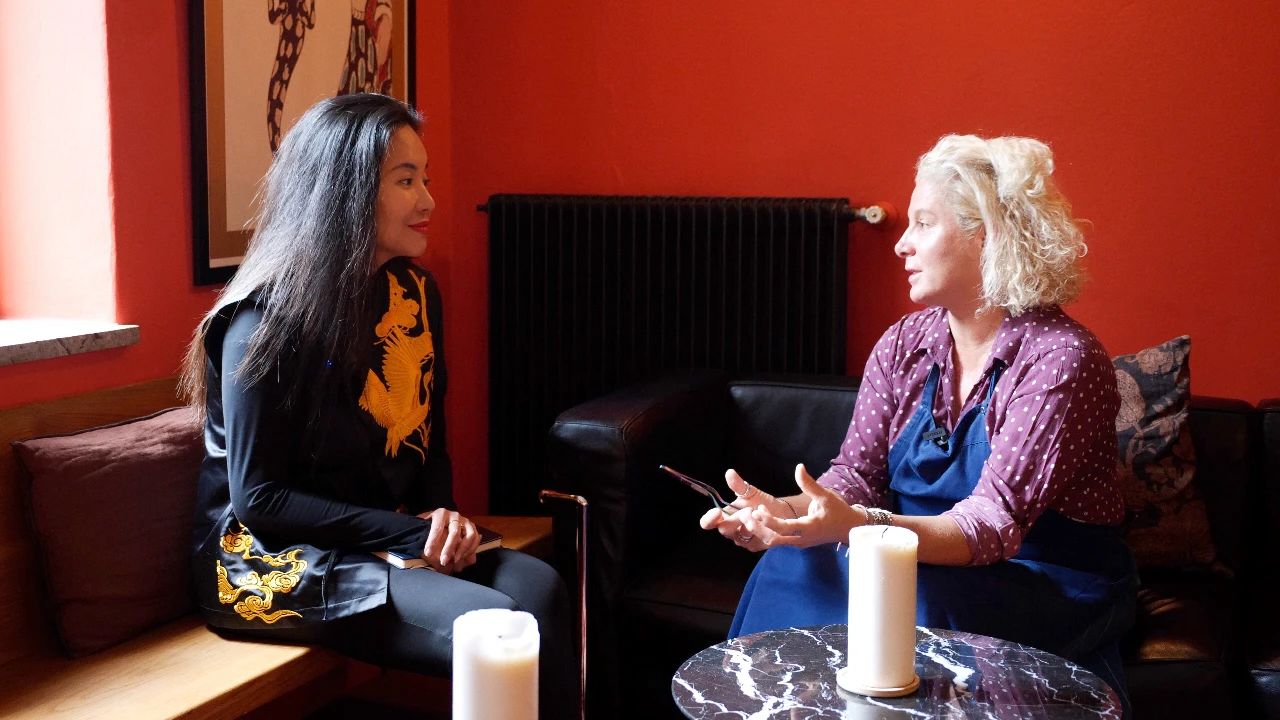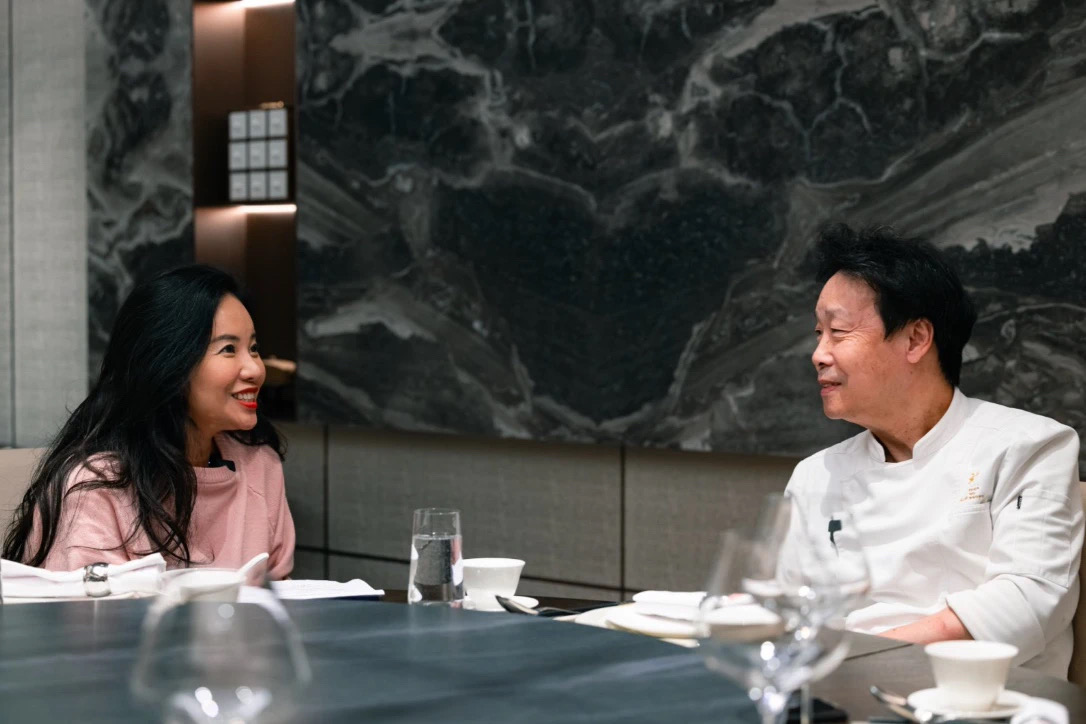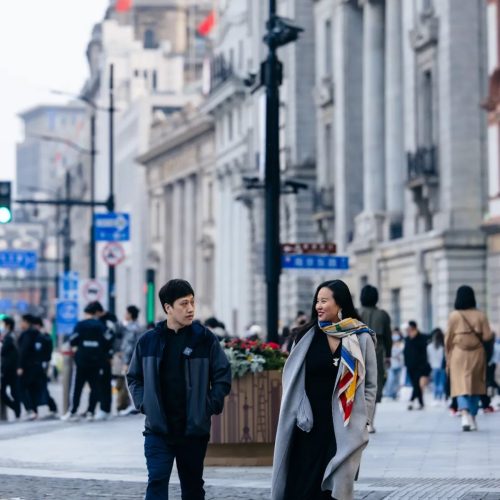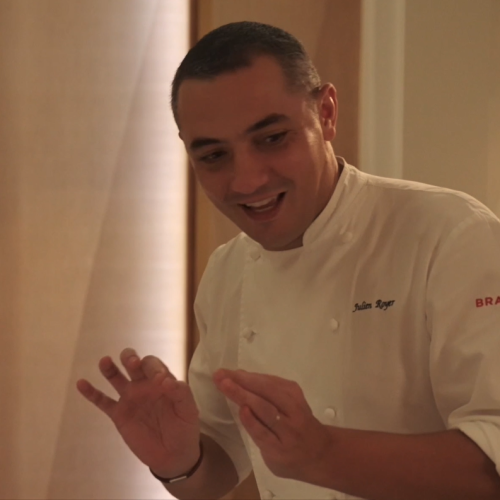There could be times when a certain cuisine was washed away by the tide of the changing world, but its glory has been etched in the history for us to discover. Mountain and Sea House, a Michelin one star and green star establishment in Taipei, has reproduced exquisite Taiwanese flavours of the 1930s through its quality ingredients, cooking techniques and artistic presentation. Dining here was like a revisit to childhood memories, arousing long-buried flavours in mind, which I came to realise are always, at last, the best.
Taiwanese cuisine was prevalently characterised by exquisiteness around the 1930s, if you consider the many refined restaurants of the Beitou hot springs region. Admittedly, Taiwanese cuisine today is typically associated with street food and home-style cooking, and many finely crafted recipes didn’t get a chance to be passed on. To recapture the gorgeous Taiwanese cuisine of the 1930s, the Yong Feng Yu Group, investor of organic produce restaurants including Green & Safe in Shanghai, has found Mountain and Sea House as well as Master Cai Ruilang, a traditional Taiwanese cuisine inheritor who has been in the business for 30 years and once studied under Master Huang Dexing of Peng Lai Ge Restaurant, one of the four major restaurants in Taiwan. The group also sought advice from local cuisine expert Huang Wanling on a few classic Taiwanese dishes in Tainan.

The cuisine at Mountain and Sea House is not just about the ingredients, but also about the cultures that have set foot on the land throughout history, including the influence of Fujian, Aboriginal, Japan, Netherlands and Guangdong. In addition to painstaking and careful restoration of the banquet cuisine of the time, the restaurant also sources its ingredients from local suppliers, including YFY’s own farms.
The restaurant’s exterior features arch-filled walls on the Dihua Street, and the interior reveals the artistic style of the Japanese Meiji Taisho period, which is deeply influenced by the European Romanticism, giving the restaurant a gorgeous and elegant atmosphere as soon as you enter. The serving plates boast dynamic colours, recreating the joy and bustle of the golden days.
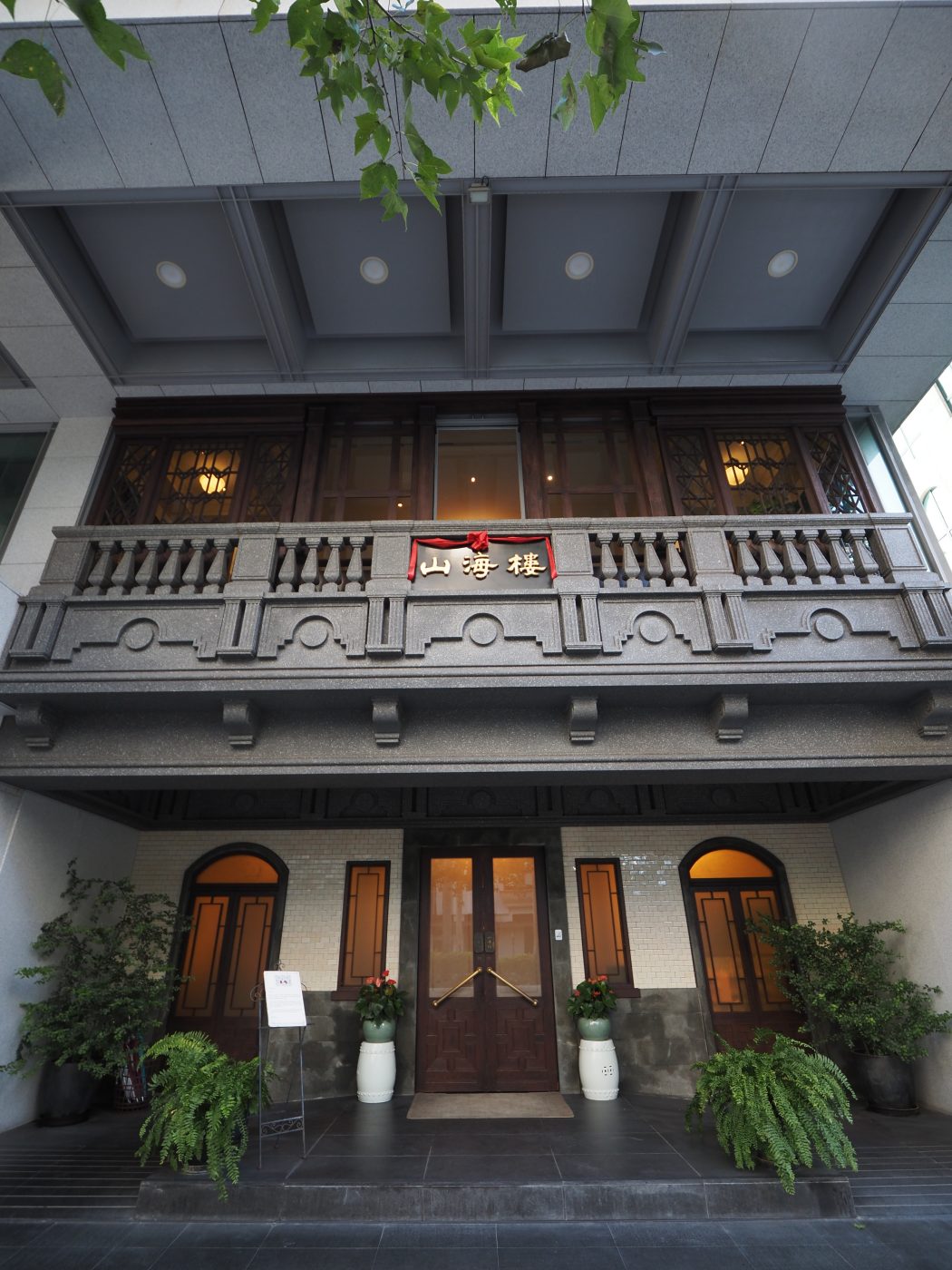

The first course Mountain and Sea Platter used to be the most expected moment of eating at a banquet in my childhood memories. In addition to soft-boiled Shaoxing wine drunken lobster, fork-tender bottarga, carefully prepared gaojha (a traditional snack from Yilan County made of pork, chicken and prawn paste wrapped in corn flour and deep fried), stewed wild abalone in flavourful Tana spice, the dish also featured Hongqu (red glutinous wine lees) braised pork, crispy on the outside and tender inside, with a definite yeasty edge of wine lees.
The Zucchini Parcel offered a lattice pattern weaved by zucchini and carrot, underneath which was a rich collection of ingredients comprising dried scallops, Taiwanese black pork and various mushrooms. Drizzled in velvety chicken stock, the dish created a tantalizing umami unique to local Taiwanese.



Taipingting Rose Prawns were plated like the eye of a phoenix. The center was mullet roe, salty duck egg yolk and prawns, wrapped in two layers of fried tofu skin, with slices of seaweed inside like eyeliners. It’s an old-fashioned banquet dish that is said to have been popular at a famous restaurant in the old Taipingting neighbourhood (now Yanping North Road) around 1930s.
Roasted Chicken was a signature dish at the renowned Peng Lai Ge Restaurant in Taiwan. Here the chicken can be enjoyed in three ways: first, take a bite of the crispy roasted chicken marinated with fermented bean curd; second, dip the chicken leg or breast into a fermented bean curd sauce; third, also my favourite, sandwich the chicken, shredded bamboo shoots and pickled vegetables in a steamed bun. It was so juicy and tender and full of flavours.



Fish Among the Willows was a traditional banquet dish, similar in flavour to sweet and sour fish, but here used wild fish from Penghu Lake, blended with three types of vinegar and over five kinds of vegetables, including naturally sun-dried orange daylily which contributed to the vital, bright acidity to the dish.
100% pure rice noodles were stir-fried with a tasty medley of dried and toasted shrimp, sun-dried Penghu squid, wood-cultivated shiitake mushrooms and seasonal vegetables.



Chef Cai treated me with a specialty dish, which turned out to be pig’s tail and pig’s blood cake cooked in Three Cup method (referring to the three ingredients that create the sauce: a cup each of rice wine, soy sauce, and sesame oil). The rice wine was replaced by Kavalan whisky and the result was chewy and aromatic.


The Scallop and Chrysanthemum Soup was a very popular banquet dish in the early days. A stuffing of scallops, matsutake mushrooms, shitake mushrooms and razor clams was enveloped in egg skin to resemble the petals of a blooming chrysanthemum. The last dish Almond Tofu was also worth mentioning. I didn’t like almond tea made with artificial flavourings when I was a child, but this dish was a very Taiwanese finish that exuded natural nutty aroma and multi-layered mouthfeel.


This meal reminded me of those good old family banqueting times when I was a child. In fact, in the early days of Taiwan, banquet Chefs were very well trained and had solid cooking skills, but as time passed by, banquets have gradually lost their appeal due to industrialised production and reduced craftsmanship. Mountain and Sea House has retrieved a luscious piece of culinary culture from the past, bringing back the exquisite 1930s style that was once lost in the tides of history.
-END-
Author:Jocelyn 华姐
Photo:Peray



